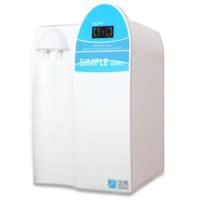Identification of Efflux-Mediated Multi-drug Resistance in Bacterial Clinical Isolates by Two Simple Methods
互联网
730
Two simple, instrument-free, user-friendly methods that can readily be implemented by a routine microbiology laboratory are described for the detection of multi-drug-resistant (MDR) isolates that overexpress efflux pump (EP) systems responsible for the MDR phenotype. The first method employs the universal EP substrate ethidium bromide (EB) at varying concentrations in agar-containing plates upon which the contents of an overnight culture are swabbed as spokes of a wheel. In this method, named the EB–agar cartwheel method, it is assumed that the smallest concentration of EB that produces fluorescence of the bacterial mass represents the highest concentration of EB that the bacteria can exclude. Consequently, as the efflux system(s) of a given MDR clinical bacterial isolate is overexpressed relative to that of a reference strain, the minimal concentration of EB producing fluorescence is significantly greater. A simple formula is provided which affords the ranking of MDR clinical isolates with respect to the degree of their efflux capacity. The second method, which can be used after the first one, determines whether the MDR phenotype is based upon an overexpressed efflux system. This method employs a 24-well microplate with separate wells containing or lacking an efflux pump inhibitor (EPI) and Kirby–Bauer discs that correspond to the antibiotics to which the MDR strain is resistant. After the wells are inoculated with the MDR clinical isolate, the plate is incubated overnight and each well is evaluated by eye for evidence of growth. Comparison of growth to the relevant control enables the observer to determine the following outcomes: no growth produced by the EPI–antibiotic combination (i.e., reversal of antibiotic resistance); reduced growth produced by the EPI–antibiotic combination; no difference in growth, i.e., EPI does not affect the resistance to the given antibiotic. If the first method showed that there was a significant difference between the minimum concentrations of EB in agar that produced fluorescence for the clinical isolate and its reference strain, then one can conclude that if the EPI had no effect on reducing antibiotic resistance, the differences in the EB concentrations that produced fluorescence are probably due to differences in the permeability of the strain to EB, reflecting a downregulation of porins if the clinical isolate is a Gram-negative bacterium.









